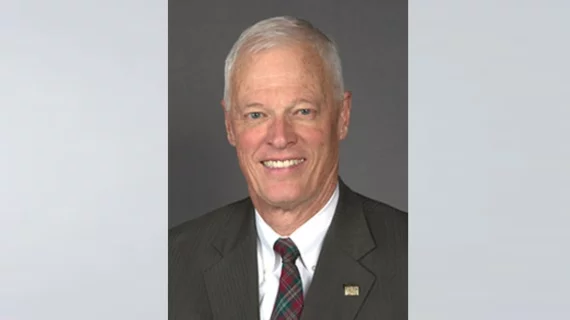RSNA 2020: Dr. Borgstede on harnessing radiology’s ‘flatteners’ to eliminate global imaging disparities
Radiology’s unique intersection of technology and patient care gives the field an advantage over other specialties. And imaging experts need to leverage their position to close the care “chasm” between low-resource regions and developed nations.
That was the call on Sunday from RSNA President James Borgstede, MD, who set the tone for the society’s first-ever online meeting. RSNA has only canceled its in-person gathering twice before, most recently in 1945 due to circumstances brought on by World War II.
Although attendees are not able to physically converge upon Chicago’s McCormick place due to COVID-19, Borgstede said collaboration and unity are more important than ever in order to enhance care for the estimated two-thirds of the world who lack access to advanced imaging.
“We’ve all been dramatically affected by COVID-19 [and] our efforts have been distinguished,” he noted during the morning session. “Our struggles punctuate the power of humans and tech coming together to innovate and improve care.”
“All patients everywhere require and deserve basic healthcare,” Borgstede, who served as past president of both the American College of Radiology and International Society of Radiology, added.
Radiology’s four ‘flatteners’
Borgstede cited Thomas Friedman’s book “The World is Flat” to illustrate how radiology can leverage its top resources and level the healthcare playing field. In his 2005 book, Friedman identifies 10 “flatteners” that he believes have equalized global opportunity.
Below are Borgstede’s four radiology flatteners:
1) Technology: Teleradiology enables worldwide connectivity and image exchange, which has proved critical during the pandemic. Point-of-care-ultrasound and portable imaging devices are cheaper and easier to transport to remote areas. And inexpensive AI can enhance interpretations, worklists and flatten interpretive skills, Borgstede noted.
2) Radiologists: Imaging physicians must be vigilant in directing the use of new tools. Rads need to increase their interactions with patients, regardless of where they practice. Such communication is “priceless” for enhancing imaging’s global footprint, Borgstede explained.
3) Patients: Consumers’ heightened healthcare expectations are driving meaningful change, he said. Radiology reports, for example, are becoming integral to patients, but are often confusing and must be explained by experts. Meeting individual's imaging needs is fundamental to expanding radiology care in low-resource settings.
4) Professional organizations: Groups such as RSNA, the European Society of Radiology and the International Society of Radiology are already offering resources, best practices, and the infrastructure required to enhance global imaging. Local groups, such as the Asian Oceanian Society of Radiology, are also key.
The field is doing much of this work already, Borgstede noted. Radiology’s consensus approach to thoracic imaging during COVID is one such example. And in the past, radiologists and vendors across the globe teamed up to establish a universal image-sharing language, known as DICOM.
Going forward, there will be obstacles, including overreliance on AI while also divorcing humanity from medicine. But those who become stewards of technology and develop new habits will succeed in creating a globalized imaging world.
“We must be a specialty that embraces collaboration to flatten radiology care across the world,” he said. “We can fulfill the vision of making two worlds of radiology one.”

